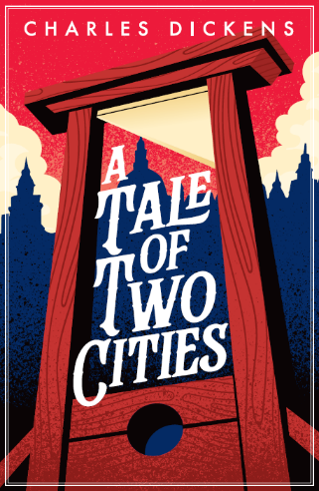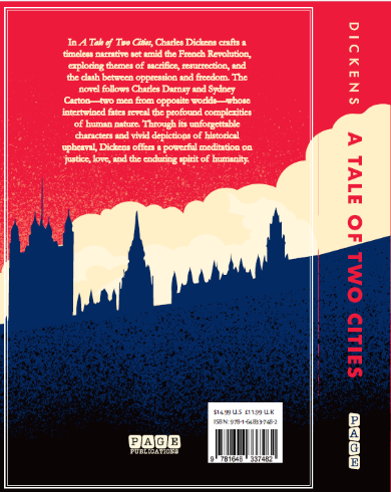A Tale of Two Cities Charles Dickens
- Regular price
- $7.50 USD
- Regular price
-
$14.99 USD - Sale price
- $7.50 USD
- Unit price
- per
Type : Fiction
SKU : 9781648337482
Couldn't load pickup availability
“It was the best of times, it was the worst of times…” — Charles Dickens' iconic opening line from A Tale of Two Cities (1859) immediately sets the tone for one of the most gripping and poignant novels of the 19th century. A tale of love, sacrifice, and revolution, it is a narrative that unfolds against the dramatic and violent backdrop of the French Revolution, showcasing Dickens' masterful storytelling and profound understanding of human nature.
Set in both Paris and London, the novel explores the intertwined lives of a diverse group of characters, each struggling with their own personal dilemmas, against the backdrop of a society on the brink of monumental change. Here’s a brief look at the key elements of this classic:
The Story
At the heart of A Tale of Two Cities is Dr. Manette, a French physician who has been wrongfully imprisoned in the Bastille for 18 years. Upon his release, he is reunited with his daughter, Lucie, who had been raised in England. Together, they form a new life in London, where Lucie meets and marries the handsome, noble Frenchman Charles Darnay.
Darnay, who has renounced his aristocratic heritage, finds himself caught in the turbulent revolution in France, accused of crimes against the people. Meanwhile, the English lawyer Sydney Carton, who has long harbored unrequited love for Lucie, remains a tragic and self-loathing figure. Carton is a man of great intellect, but he is also deeply disillusioned and dissipated, caught in a life of self-destructive behavior.
The Novel’s Enduring Legacy
“It is a far, far better thing that I do, than I have ever done…” This line, spoken by Carton as he faces his fate, has become one of the most famous in all of English literature, embodying the themes of sacrifice, redemption, and the possibility of finding purpose even in the darkest of times.
The novel's ending, with Carton’s self-sacrifice, is a powerful statement about the possibility of redemption through personal sacrifice. It offers a message of hope that, even amidst the brutality of revolution and personal failure, one can find meaning and transcendence.
Conclusion
A Tale of Two Cities is a tale of contrasts: love and hate, nobility and injustice, peace and violence. But above all, it is a story about redemption, the possibility of change, and the enduring power of human sacrifice. Dickens' profound exploration of these themes, paired with his unforgettable characters and timeless narrative, ensures that A Tale of Two Cities remains one of the greatest works in English literature, offering both a riveting historical account of the French Revolution and a deep meditation on the human condition.
5.1 x 7.87 (Inches)
460 Pages



